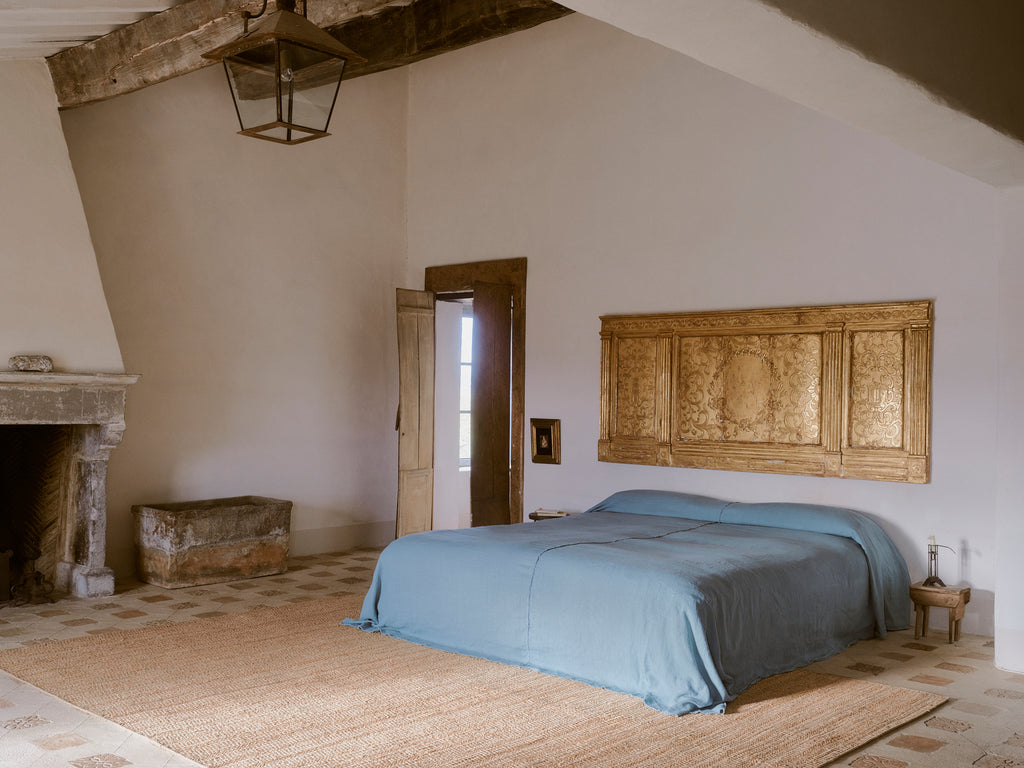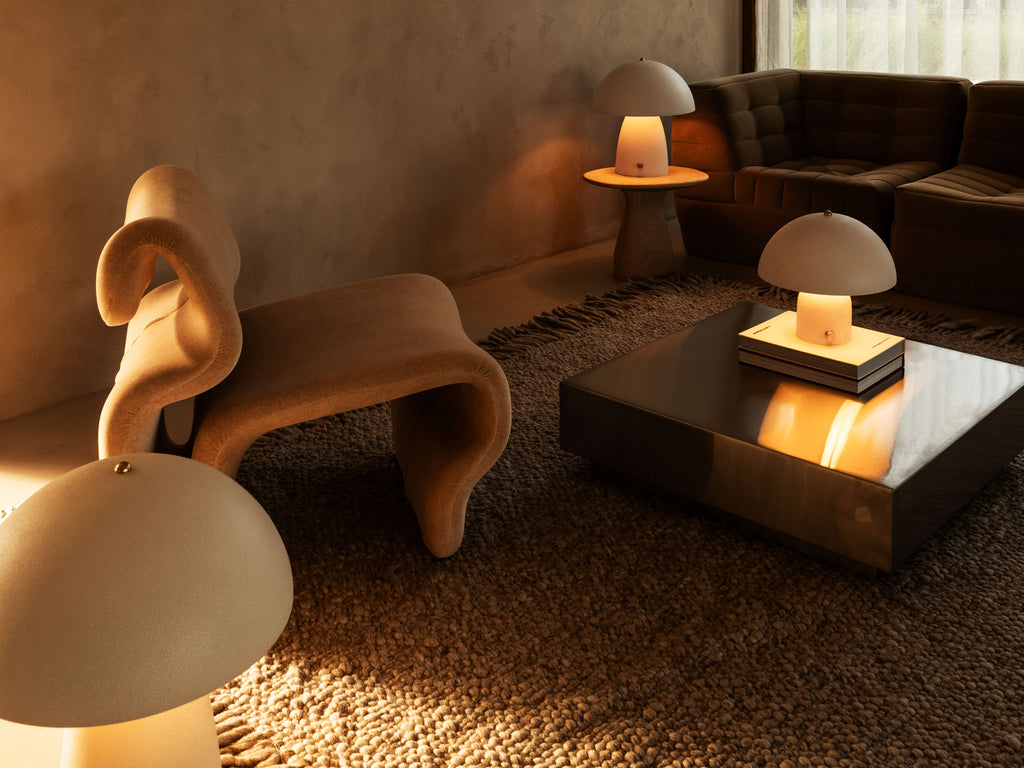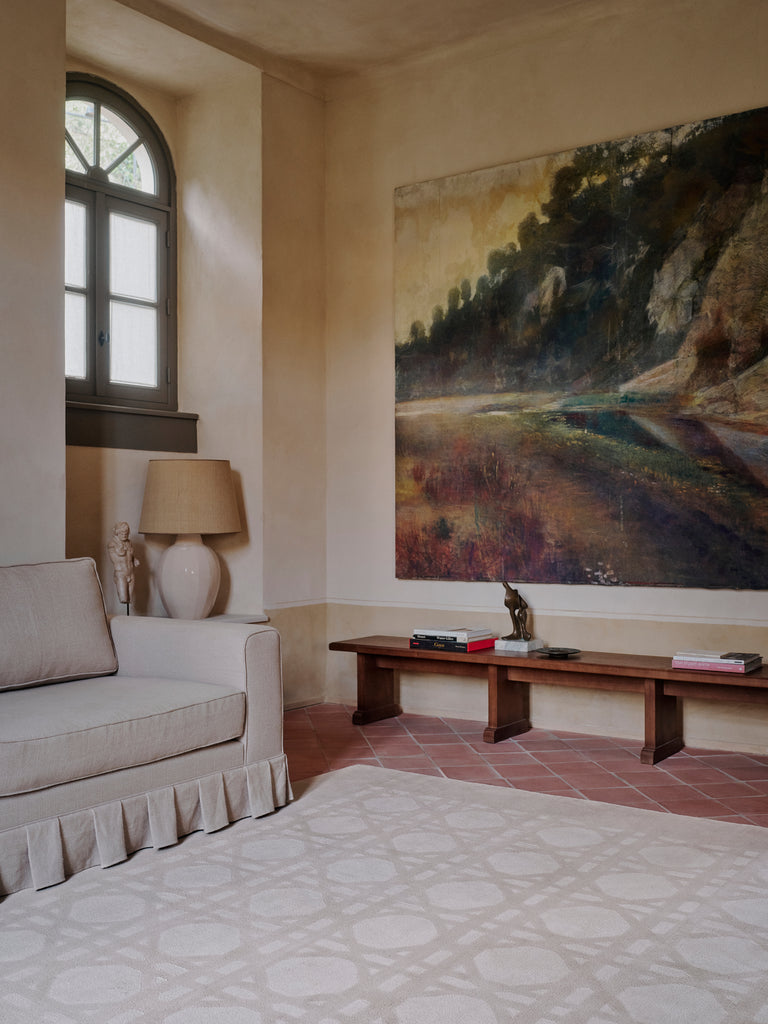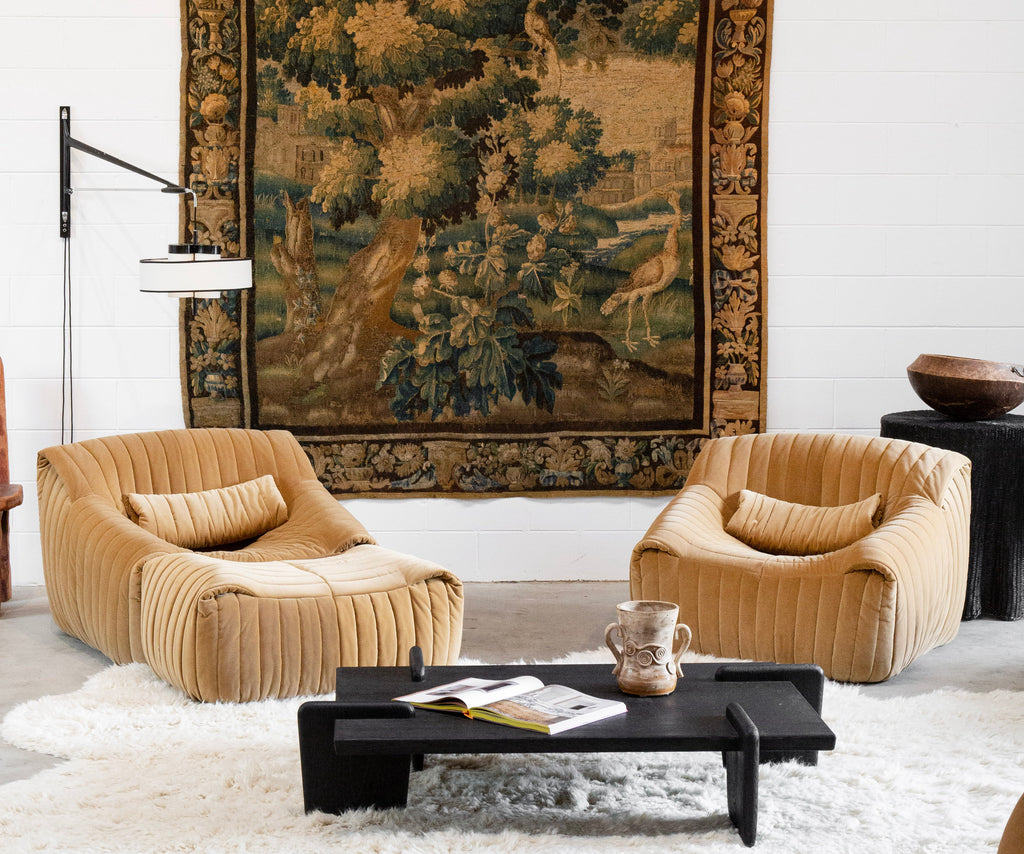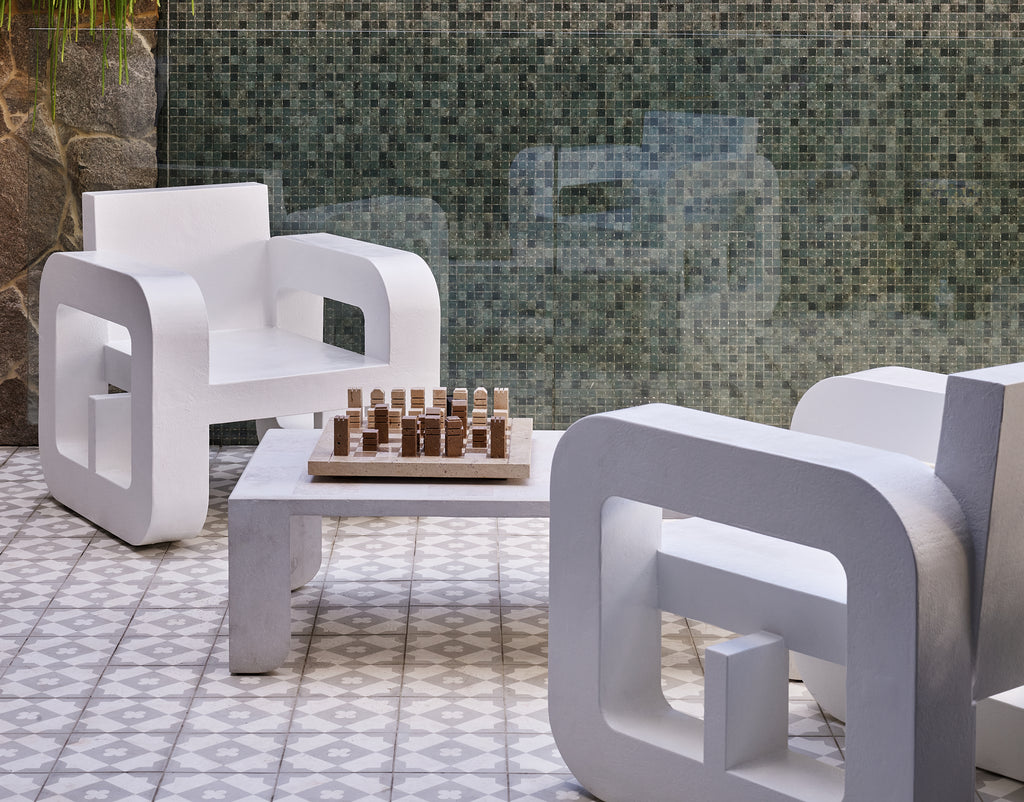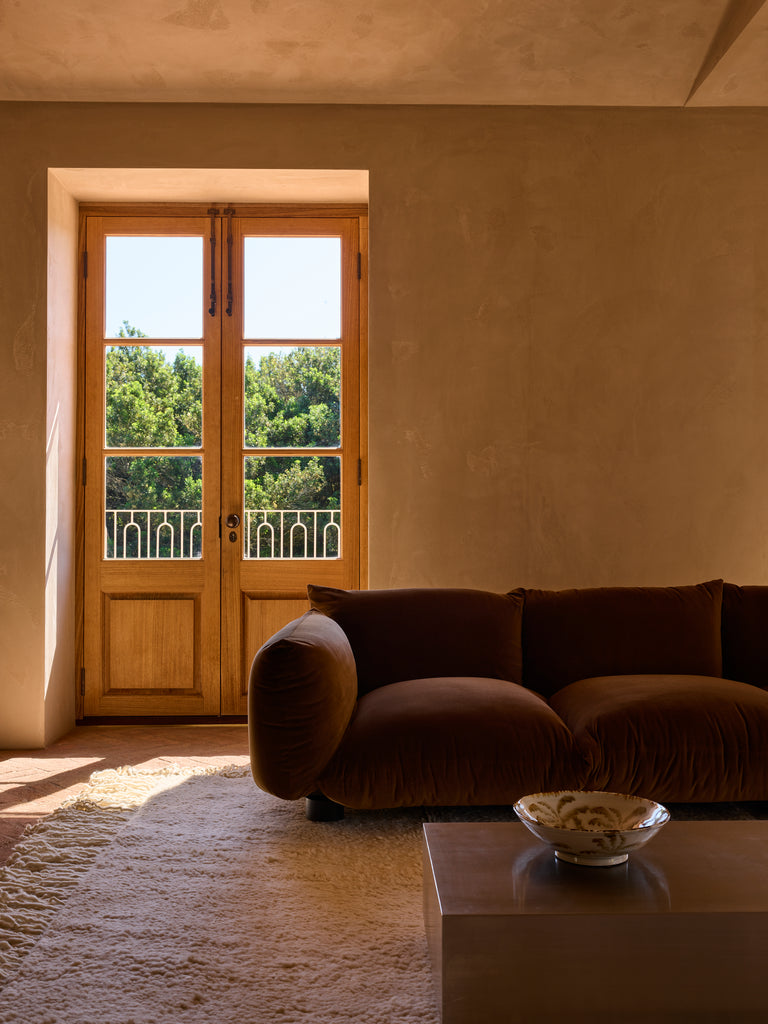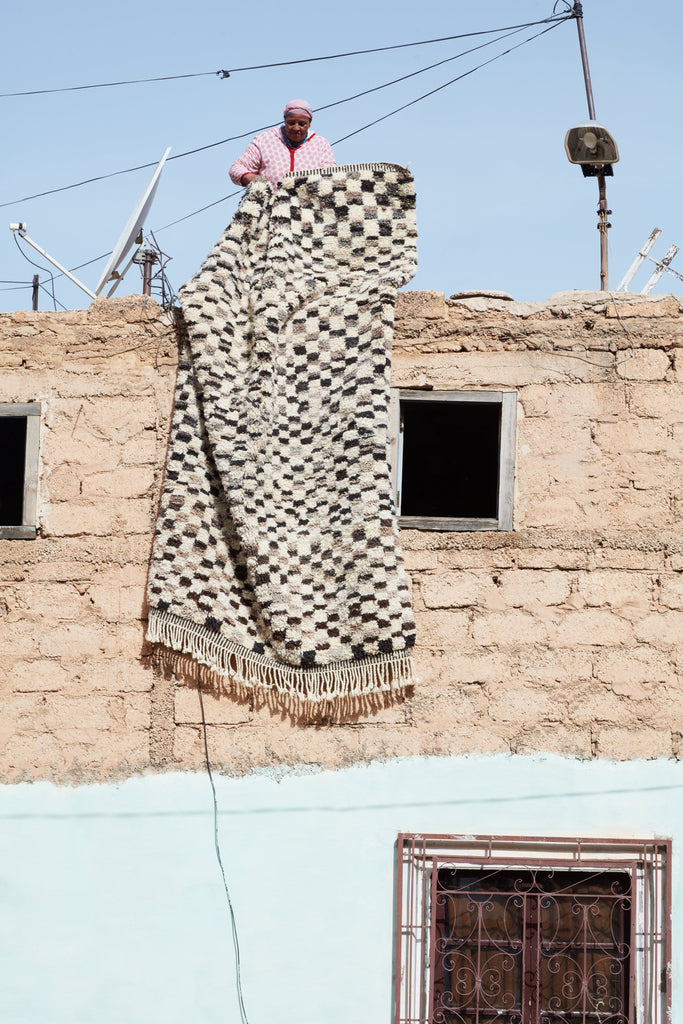
Tête-à-tête
FAINA's fight to preserve Ukrainian cultural heritage for future generations
FAINA is a ‘live minimalist’ design collection, established in 2014 by Ukrainian architect Victoria Yakusha as a representation of her two greatest passions – nature and minimalism.
Made by hand in a sustainable manner, each piece is endowed with natural tactility, created upon a philosophy that embraces connectedness to the living world and its elements.
Reflecting the strong sociocultural changes in the Ukraine and Yakusha's desire to communicate history, the designs are rooted in traditional Ukrainian heritage and artisanal craftsmanship.
FAINA tells a story of the land, that at its core represents the resilience of Ukrainian people and their identity - which in this harrowing time of war and destruction is more important than ever before.
We spoke to Victoria about her fight to preserve the cultural legacies of their people, and how the work of FAINA helps to keep ancient Ukrainian traditions alive for future generations...
Thanks for taking the time to talk to us Victoria. Before we speak about FAINA, Tigmi would like to acknowledge the atrocities of what is currently happening in the Ukraine, your home, and the home of FAINA.
If there was one message you would like to convey to our audience, what would that be?
Light overcomes darkness.
FAINA is a ‘live minimalist’ design collection that is deeply rooted in Ukrainian cultural heritage, a marriage of modern design and artisanal craftsmanship – what positive sociocultural changes have you witnessed through the work of FAINA and how have they been impacted over the past 6 months?
Since 2014, the year of the Revolution of Dignity in Ukraine and the founding of FAINA, I did everything in my power to share the beauty of Ukrainian culture, crafts and traditions with the world. Many people told me that they discovered our country through FAINA and our design expedition “Land Inspires” and were touched by it. Over the last 6 months, we just continued following our mission - passing on the history of our people and our land. I want people to mention Ukraine not only in the context of the war. It is a land of rich culture, vibrant energy, and creative people.
In the global context, Ukraine is currently changing the world’s landscape. Our people are showing the power of virtues, of real values. Ukraine reminds the world that it has no other option than to be better.
What are some of the most endangered traditional techniques that FAINA employ in their designs?
For our tapestry series, we use ‘lizhnykarstvo’, a traditional wool weaving technique. I've also wanted to work with glass for a long time, and a year ago in Paris, we presented a limited series of fluid vases in the 'gutnytstvo' technique. This is a traditional craft of free blowing with a history of more than 1000 years. Artisans don't use molds in the process, the creation is guided by the nature of the material itself.


Light overcomes darkness.



Ztista is a material invented by FAINA, a nature friendly material composed of clay, wood chips, straw, linen, and recycled paper – amazingly, it is also a material that can decompose in five years once combined with soil.
While many sustainable design brands would argue their designs to have timeless permanence, you have proven conscious design could also mean a responsibility to self-destruct. What significance does sustainability play in FAINA’s designs?
My notion of sustainability is rooted in a connection to the natural world which was evident to me from childhood and in my practice as an architect. Architecture is art for eternity. Architecture taught me to take responsibility on my own shoulders. Responsibility towards future generations, towards our children and our grandchildren - it seems very distant, but it’s not. So, with every FAINA piece, we try to create something that can be passed on. It's about value.
Environmental awareness, ethnicity and memory are connected. You think about the past and want to preserve it. If you do not care about sustainability or don’t think about what will happen with a product in a few years, you are harming the planet. Maybe, in a few years, we will have a new product category — “products of harm".
Our soil, our land is an inevitable part of us. That's one of the core ideas behind FAINA's live design philosophy.
FAINA has always been a story about origin and pride. What other stories do you hope to weave about the future of interior design?
My designs are always based on what I feel. Through the language of design, I respond to events and communicate the stories I carry within me. I believe in a connection to our roots that helps us understand who we are, I believe in the power of truth and of ‘the real’. The world longs for realness now. Future design and architecture are about an ecological approach to everything from the objects we bring into our worlds to healthy human relationships with equality and mutual respect.
‘Our ancestors were so connected to nature that they spoke to it. When you are in a space entirely made of natural materials, it is easier to breathe. Space is important in interiors. It is freedom. It reminds you that you are alive.’
– Victoria Yakusha
What is your personal connection to the natural world. Has its importance been ingrained since childhood, or a lesson learned in life?
I feel nature very well. I take strength from it. It seems to me that this is a mutual story. There is always some kind of transmission. Energy. Fulfillment.
In Ukraine, we have a very sensitive and deep perception of nature and a strong connection with our land. We are used to interacting with nature. We have gardens, we love to work the soil. For us, it's all very organic. Since the war, this connection became more evident for each of us and for the whole world, and that explains the way we act and the way we think.
There is a palpable, tangible energy imbued in every FAINA piece, can you tell us more about this ‘living’ design?
Live design is a philosophy that values authenticity, craftsmanship, connection to nature. Living energy is always at the core. The energy of a craftsman, the energy of the natural material and the land itself, the story behind it. In some ways, live design has taken a lot from animism. It's a different level of appreciation of an object.

On your 2019 expedition through Ukraine with a team of designers and journalists from all over the world you presented a question, ‘What can we as contemporary designers and architects do to preserve local crafts’ – how would you answer that question today?
Unity was the most important word of the first months of the war and still is. Through collaboration, interaction, exchange, both commercial and socio-cultural projects, we can protect and pass on the craft, tell about its value and beauty. The power of design for me is when the past, present, and future intersect. (WATCH 'LAND INSPIRES' HERE)
Can you describe what the past 6 months has been like for your business and how the war in Ukraine affected your global operations?
We opened FAINA Gallery in Antwerp last year, so we had some objects in stock there and it allowed us to sustain the business. It was a constant “save mode” trying to solve the issues we faced for the first time in our life. The production sites had been halted and we were relocating them to safer areas. Now we renewed all the operations, and work at our maximum as all Ukrainian brands. While our Armed Forces stand on the ground, we have to be in the rear for our land.




For those wanting to support from other parts of the world, what would you suggest are the best ways?
There are a lot of institutions to donate to the Armed Forces of Ukraine or humanitarian charities.
At FAINA, we support cultural institutions, as it’s important for us to preserve Ukrainian cultural heritage. One of the projects I am currently working on is dedicated to Maria Prymachenko, a truly genius primitivist and one of my favorite artists. Her powerful compositions move, breathe, grow before our eyes and reveal the essence of all living things. A museum with works by Prymachenko was burned down by Russians in March. We began working with the Maria Prymachenko Family Foundation, which is now raising funds to protect and preserve her art, and are planning an art residence and museum of Prymachenko.
It is also very important to continue spreading knowledge about Ukraine and our culture. Ukraine is a country of creative energy and minds, and you can support local people and brands by collaborating with them.
What is your hope for the future of Ukrainian Design?
We see rapid growth, and it will only deepen in the future. When we presented Ukrainian design at the Venice Biennale in 2015, hardly anyone knew anything about contemporary Ukraine. Now our design has gained strong features, its own identity and design language. We have deep roots and a very ancient culture, which give us a strong foundation.
A latest or forthcoming project?
Two months ago, at Design Miami/Basel I presented my limited-edition collection of furniture and decor “Stepping On Ukrainian Soil”. It was the first work after the full-scale Russian invasion in February, a very important project for me that reflected our connection to our land. At the moment, we separated my limited designs, which will be produced only in a few pieces, and FAINA's collections. Sustainability and traditional methods of production will remain the main focus for both.
_______
FAINA is available exclusively in Australia with Tigmi.
VIEW THE FAINA COLLECTION


